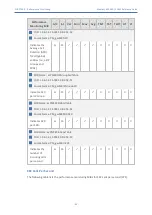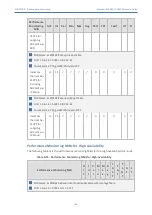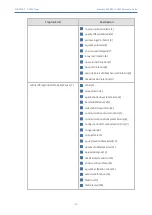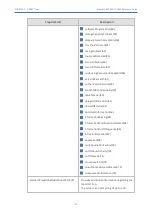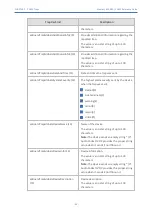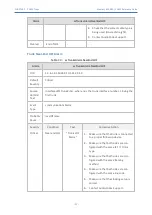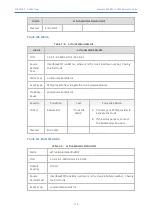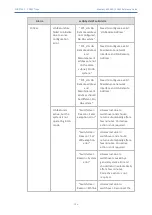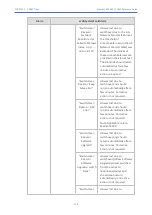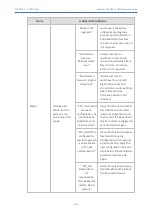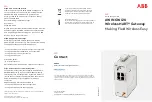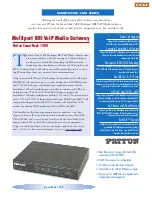
CHAPTER 7 SNMP Traps
Mediant 800 SBC | SNMP Reference Guide
■
Cleared alarm:
CLEAR-ALARM: <Alarm Name>; Textual Description: <Textual Description>; Severity <Alarm
Severity>; Source <Alarm Source>; Unique ID: <Alarm Unique ID >; If exists Additional
Info1:/ Additional Info2:/ Additional Info3:
SNMP Alarms
The tables in the following subsections provide information on alarms triggered as a result of a
generated SNMP trap. The component name (described in each of the following headings)
refers to the string provided in the acBoardTrapGlobalsSource trap varbind. To clear a
generated alarm, the same notification type is sent but with the severity set to ‘Cleared’.
You can customize the severity level of SNMP trap alarms using the Alarms
Customization table [AlarmSeverity]. This table also lets you suppress alarms.
Trunk Alarms
This section describes the SNMP alarms concerned with digital trunk interfaces.
Trunk Near-End LOS Alarm
Table 7-3: acTrunksAlarmNearEndLOS
Alarm
acTrunksAlarmNearEndLOS
OID
1.3.6.1.4.1.5003.9.10.1.21.2.0.49
Default
Severity
Critical
Source
Varbind
Text
Interfaces#0/Trunk#<m>, where m is the trunk interface number, 1 being
the first trunk
Event
Type
communicationsAlarm
Probable
Cause
lossOfSignal
Severity
Condition
Text
Corrective Action
Critical
Near-end LOS
"Trunk LOS
Alarm"
Loss of Signal (LOS) indicates a physical
problem.
1.
Check that the cable is connected
on the board.
- 98 -



